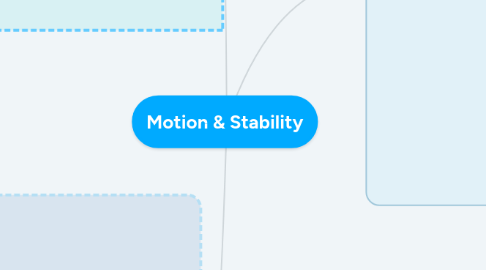
1. Types of Interactions
1.1. objects must be in contact
1.1.1. Electromagnetism
1.2. Objects do not require to be in contact
1.2.1. Gravitational
1.2.1.1. objects with mass
1.2.1.2. always attractive
1.2.2. electric
1.2.3. magnetic
1.2.3.1. attractive or repulsive
1.3. Strong & weak nuclear interactoins
1.3.1. atomic nuclei
1.4. Grade Endpoints
1.4.1. End of 2nd Grade:
1.4.1.1. objects touch or collide, they push on each other
1.4.2. End of 5th Grade
1.4.2.1. objects in contact exert forceo n each other
1.4.2.2. gravitational force of earth pulls object to planet's core
1.4.3. End of 8th Grade
1.4.3.1. Electric & Magnetic
1.4.3.2. two masses always have gravitational force
1.4.4. End of 12th Grade
1.4.4.1. Newton's law of universal gravitation
2. Stability and Instability in Physical Systems
2.1. depends on the balance or imbalance among the events/processes
2.2. stable system is when internal&external forces changes return to prior states
2.3. system can be changing or with repeat cycle of changes
2.4. Grade Band End points
2.4.1. End of 2nd Grade:
2.4.1.1. When object moves or stay still it depends on the push and pull on it
2.4.2. End of 5th Grade
2.4.2.1. System can change if it moves one direction
2.4.3. End of 8th Grade
2.4.3.1. system rely on mechanisms
2.4.4. End of 12th Grade
2.4.4.1. a system has great components, then it is unpredictable
3. Force & Motion
3.1. Force can cause a change in motion of one or both of interacting objects
3.1.1. Static Object: multiple forces acting on it but sum to zero
3.1.2. If total force is not zero, motion will occur
3.1.3. Force on object can change shape or direction of object
3.1.4. Force exerted by 1st object to 2nd has same amount of force from 2nd to 1st in opposite direction
3.2. Force= mass x acceleration
3.3. Grade Band Endpoints
3.3.1. End of 2nd grade
3.3.1.1. Objects pull or push each other when they collide
3.3.1.2. Friction can cause a change in object's motion and speed
3.3.2. End of 5th grade
3.3.2.1. Force acts on object and has strenght and direction
3.3.2.2. object's motion can be measured
3.3.3. End of 8th Grade
3.3.3.1. Newton's 3rd law
3.3.3.2. motion of object is the sum of forces acting on it
3.3.3.2.1. E
3.3.4. End of 12th Grade
3.3.4.1. Newtons 2nd law

